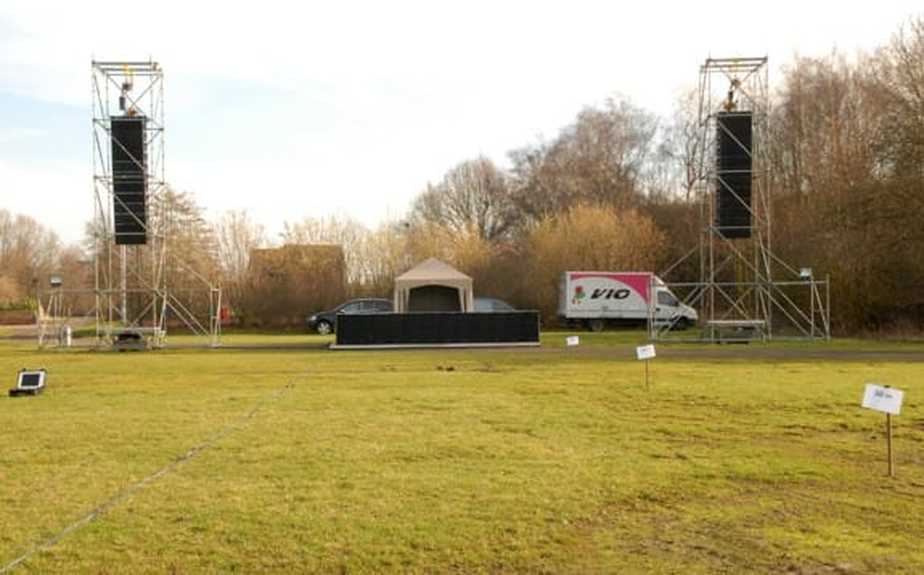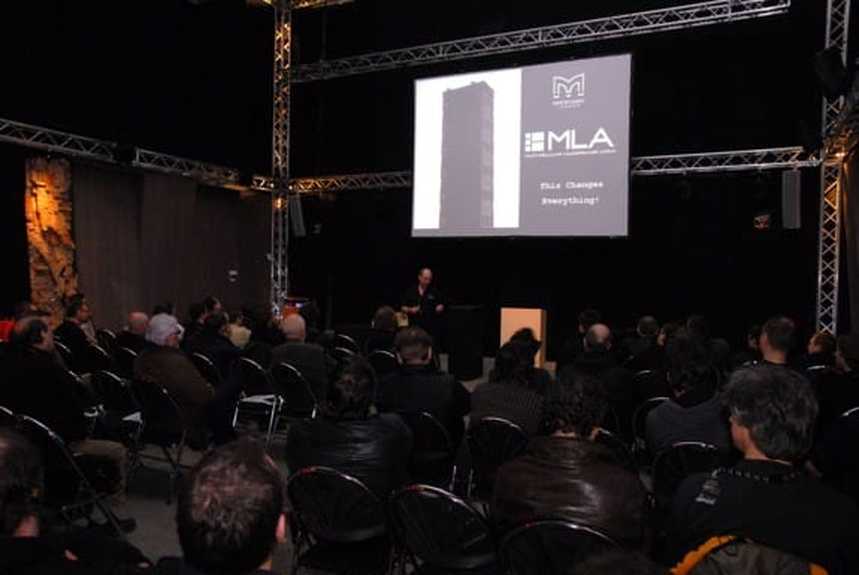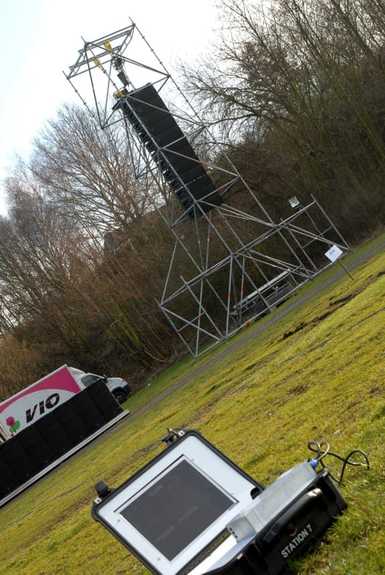MLA TAKES ON NEW BELGIAN FESTIVAL SOUND LIMITS
FACE CONDUCTS SITE DEMO TO PROVE THAT RADICAL DESIGN WILL MEET REDUCED THRESHOLDS BEYOND THE COVERAGE AREA
When Flemish CD&V minister Joke Schauvliege pleaded recently for clear legislation regarding Belgian pop festival sound thresholds, following the proposal of a 100dB LAeq (15) and 116dB (C) maximum for the loudest norm in public areas, it couldn't have come at a better time for Karel de Piere and his team from technology specialists, FACE.
With the new festival season fast approaching in a country noted for its outdoor events, if the new proposals become law it will have a major impact on festival promoters and production companies. Thus FACE decided it was time to act.
By chance the Belgian distributors had carried out measurement tests of Martin Audio's radical new Multi-Cellular Loudspeaker Array (MLA)* nine months earlier - during an Amnesty International concert in Antwerp's Groenplaats - followed by a demo at the large Antwerp Sportpaleis arena. And they knew the system would meet the new criteria.
'The results were simply staggering,' said de Piere. "From the outside the MLA enclosures look like ordinary loudspeakers - but they conceal an ingenious design philosophy.'
The MLA was designed to minimise the variations in frequency response and sound pressure levels - effective over distances of up to 150 metres. Thanks to an accurate predictive analysis, trial-and-error array design has been replaced with intelligent numerical optimisation of the array's output based on a highly accurate acoustic model. With the multi-cellular approach, each cell is individually addressed by its own DSP and Class D amplifiers.
'This means that wherever they are sat in the festival field, each person will receive the same sound image at the same volume,' notes the FACE director.
'If a concert organiser wanted to achieve 100dB at the back of the site by the conventional method, he would need to have 110dB in front - by the speaker system. But we wanted to prove that this is now no longer the case. With MLA, the volume can be at exactly the same level throughout the coverage area, while we can limit the sound immediately beyond that - for the neighbours or the festival camp-site.
"The system also ensures that there is virtually no sound return to the stage - so it is nicer for the musicians to play through the MLA. "
Karel De Piere recalls that at the Groenplaats, when the local environmental police arrived onsite, they patently disbelieved that the 102dB registering at the mix position would not spill out to the neighbouring businesses and residents surrounding the square. 'But what we saw was an alarming tapering off of 12dB [beyond the sound field] over the final 15 metres - to hit 90dB. People were telling me it was not possible.'
The recent evaluation at the FACE HQ in Boom saw Martyn 'Ferrit' Rowe, Martin Audio's Technical Training Manager, demonstrate the theory to around 90 festival organisers, sound technicians and members of the press in a seminar presentation - backed up by practical examples from the Zac Brown Band's American tour.
Next, the assembly repaired to an adjacent park - which also happens to be the location for the dance festival, Tomorrowland - where the site measures 80 metres wide by 160 metres deep. Here two PA wings were set at a distance of 24 metres (with 12-box hangs per side trimmed at a 10 metre height). A further 12 MLX subs were stacked adjacent to each other - forming a single broadside array - along the front.
To give the 'festival site' further authenticity, a 'mix tent' (which also contained drinks and heating) was sited at 70 metres distance from the MLA.
Source material was provided by carefully-chosen CD tracks, to demonstrate a wide range of music programme material.
Assisted by Peter van der Geer from Event Acoustics Projects onscreen readings were taken at 20m, 60m, 80m and the final one at 130m - with one overview screen placed at the mixing position.
'We could clearly see the four levels - at the first three measurement positions the level was the same but the drop off was -15dB at the 130 metre mark - which was quite impressive,' said FACE's Steven Kemland. 'The environmental people from Antwerp [who had sanctioned the event on the Groenplaats] also used their own measurement instruments as proof of concept.'
Knowing that all feedback had to be supplied to the Minister by February 11th, FACE believe the exercise was vital. 'It was necessary that our guests could experience the technical solution for themselves - proving that the system would deliver an identical SPL to everyone throughout the site, with a steep 'tapering off' outside the festival zone.
'After the demonstration, those present were still marvelling at how the system could throw consistently over that distance and then suddenly fall off,' continued Kemland. 'I think as a result everyone will know that there is a future beyond line array. The event was a complete success.'
And Karel de Piere added, 'This was a perfect situation to prove to festival organisers, sound technicians, politicians and press the validity of this system - and we believe we have gone a long way towards establishing MLA on festival riders should this 100dB sound threshold become law.'
Further information from:
Maureen Hayes, Martin Audio
Tel: +44 (0)1494 535312
Fax: +44 (0)1494 438669
Jerry Gilbert, JGP Public Relations
Tel: +44 (0)1707 258525
Fax: +44 (0)1707 267140
Pics: Martyn 'Ferrit' Rowe presents the practical demo; outside on the mock festival site


